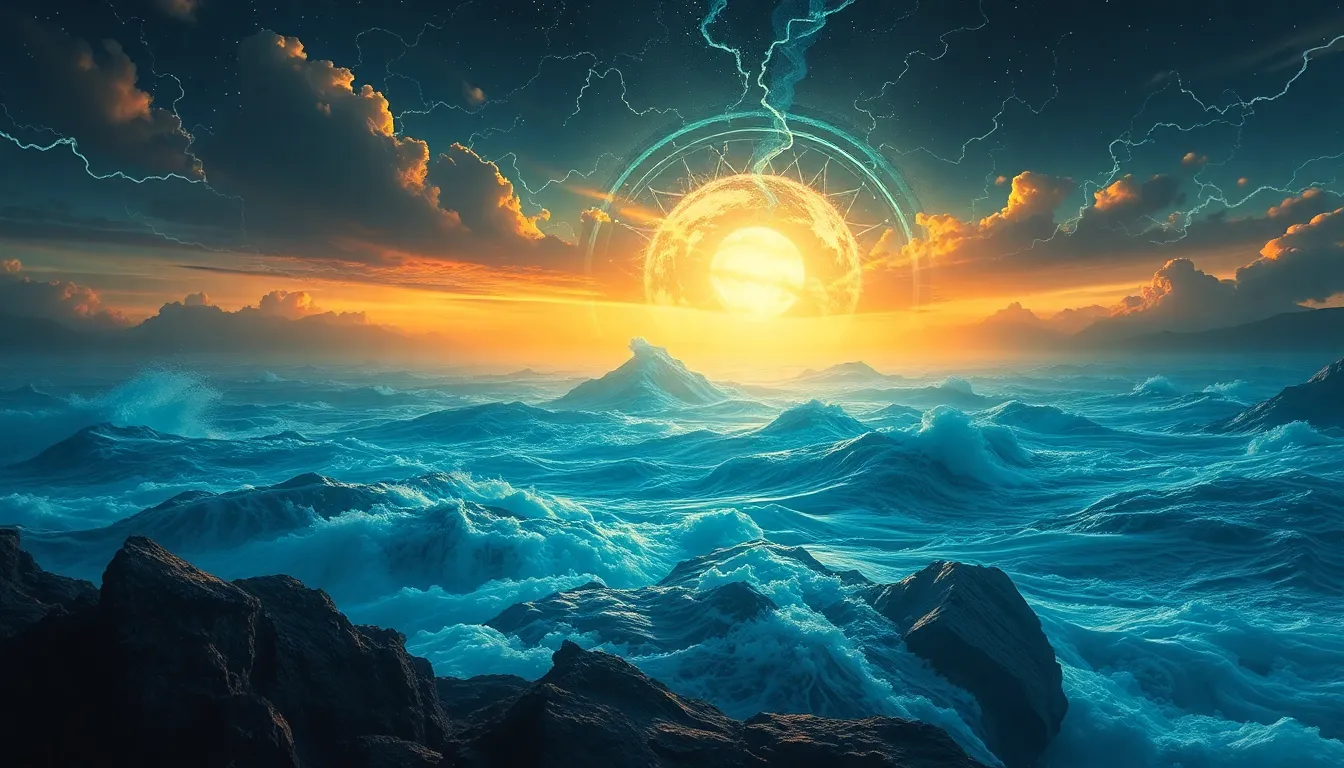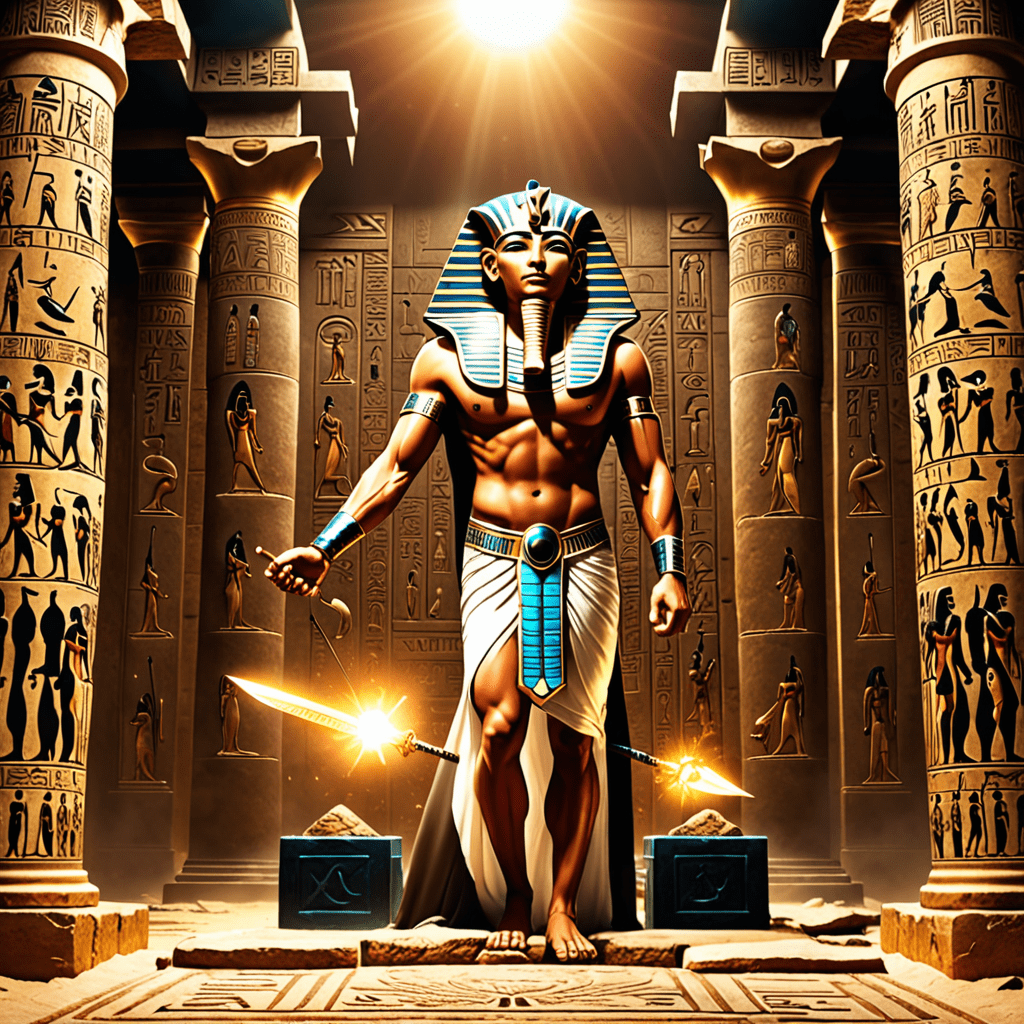The Floods of Creation: How Myths Explain the Birth of Worlds
Introduction
Creation myths serve as the bedrock of many cultures, offering insight into how different societies perceive the origins of the world and humanity. Among these myths, the motif of floods emerges as a powerful narrative element that signifies both destruction and rebirth. Floods are often depicted as cataclysmic events that cleanse the world, making way for new beginnings. In this article, we will explore the significance of floods in creation myths across various cultures, examining their symbolism, archetypal themes, and enduring legacy.
The Symbolism of Floods in Creation Myths
Floods in creation myths typically symbolize a deep, transformative process. They represent:
- Cleansing: Floods wash away impurities, sins, and the old world.
- Rebirth: After destruction, new life and creation emerge.
- Chaos and Order: Floods embody chaos that precedes the establishment of order.
This duality of destruction and creation is central to understanding flood narratives. Common motifs associated with these myths include:
- The hero or chosen one who survives the flood.
- A divine being who initiates the flood as punishment or purification.
- The construction of a vessel, such as an ark, to withstand the waters.
Global Perspectives on Flood Myths
Flood myths are prevalent across diverse cultures, each providing a unique perspective on the themes of destruction and rebirth:
Mesopotamian: Epic of Gilgamesh
In the ancient Mesopotamian Epic of Gilgamesh, a great flood is sent by the gods to destroy humanity due to their wickedness. Utnapishtim, akin to Noah, builds a vessel to save his family and various species, symbolizing survival amidst chaos.
Hindu: Manu and the Matsya Avatar
The Hindu tradition tells of Manu, who is warned by the fish-god Matsya of an impending flood. He constructs a boat and saves the seeds of all living creatures, signifying the preservation of life through divine intervention.
Native American: The Great Flood
Many Native American tribes share stories of a great flood that cleanses the earth. For example, the Ojibwe speak of a flood that was sent to rid the world of giants, with only a few chosen survivors to repopulate the earth.
Polynesian: Māori Traditions
Māori traditions also contain flood narratives, where the earth is submerged, leading to the rebirth of land and life. These stories often connect deeply with the ancestors and the land itself.
The Role of Deities in Flood Myths
Deities play crucial roles in flood myths, either as initiators of the floods or as protectors of humanity:
- Benevolent Deities: These gods often provide guidance and assistance to the chosen individuals, ensuring the survival of life.
- Wrathful Deities: In contrast, some gods unleash floods as punishment for human sins, emphasizing the need for moral conduct.
The theological implications of divine intervention in these narratives raise questions about justice, morality, and the relationship between humanity and the divine.
Flood Myths and the Concept of Chaos
Floods frequently represent primordial chaos that precedes creation. This chaos is essential for the formation of order and structure in the universe:
- Chaos as a Precursor: Many myths depict floods as the chaotic state from which the world is formed.
- Order Through Survival: The survivors of the flood often go on to create a new, ordered world.
Examples include the biblical flood narrative where Noah’s Ark signifies hope and renewal amidst devastation.
Archetypal Themes of Survival and Renewal
Many flood myths feature archetypal themes of survival and renewal:
- The Hero’s Journey: The protagonist often embarks on a journey of survival, reflecting personal and collective struggles.
- Archetypes of Survival: Characters may embody archetypes such as the chosen one or the protector, often finding refuge in a vessel.
- Thematic Renewal: After the flood, there is a renewed world where life begins anew, often with a deeper understanding of existence.
Geological and Historical Contexts of Flood Myths
Real historical floods have significantly influenced cultural narratives. Geological events such as the flooding of the Black Sea or the Tigris and Euphrates rivers have inspired local myths:
- Case Studies: Ancient civilizations, including the Sumerians and Egyptians, have flood stories closely tied to their environments.
- Impact of Geological Events: These events shaped how cultures viewed their relationship with nature and the divine.
Psychological Interpretations of Flood Myths
From a psychological perspective, flood myths can be interpreted through the lens of Carl Jung’s archetypes:
- Collective Trauma: Floods can serve as a metaphor for personal and societal trauma, reflecting the chaos of human experience.
- Transformative Power: Myths provide a narrative framework for healing and transformation, allowing individuals to find meaning in suffering.
Modern Interpretations and Adaptations of Flood Myths
Contemporary literature and media continue to reinterpret ancient flood stories, highlighting their relevance today:
- Ecological Themes: Many modern adaptations focus on environmental issues, reflecting humanity’s ongoing struggle with nature.
- Examples in Media: Films like “2012” and books such as “The Grapes of Wrath” draw on flood motifs to explore themes of survival and renewal.
Conclusion
The significance of floods in creation myths transcends time and culture. These narratives embody themes of destruction and rebirth, chaos and order, and survival and renewal. The enduring legacy of flood myths continues to resonate, offering insights into the human condition and our relationship with the world around us.



